Indigenous
Community workers gather for interactive Canadian history lesson
An emotional exercise about the consequences of colonization
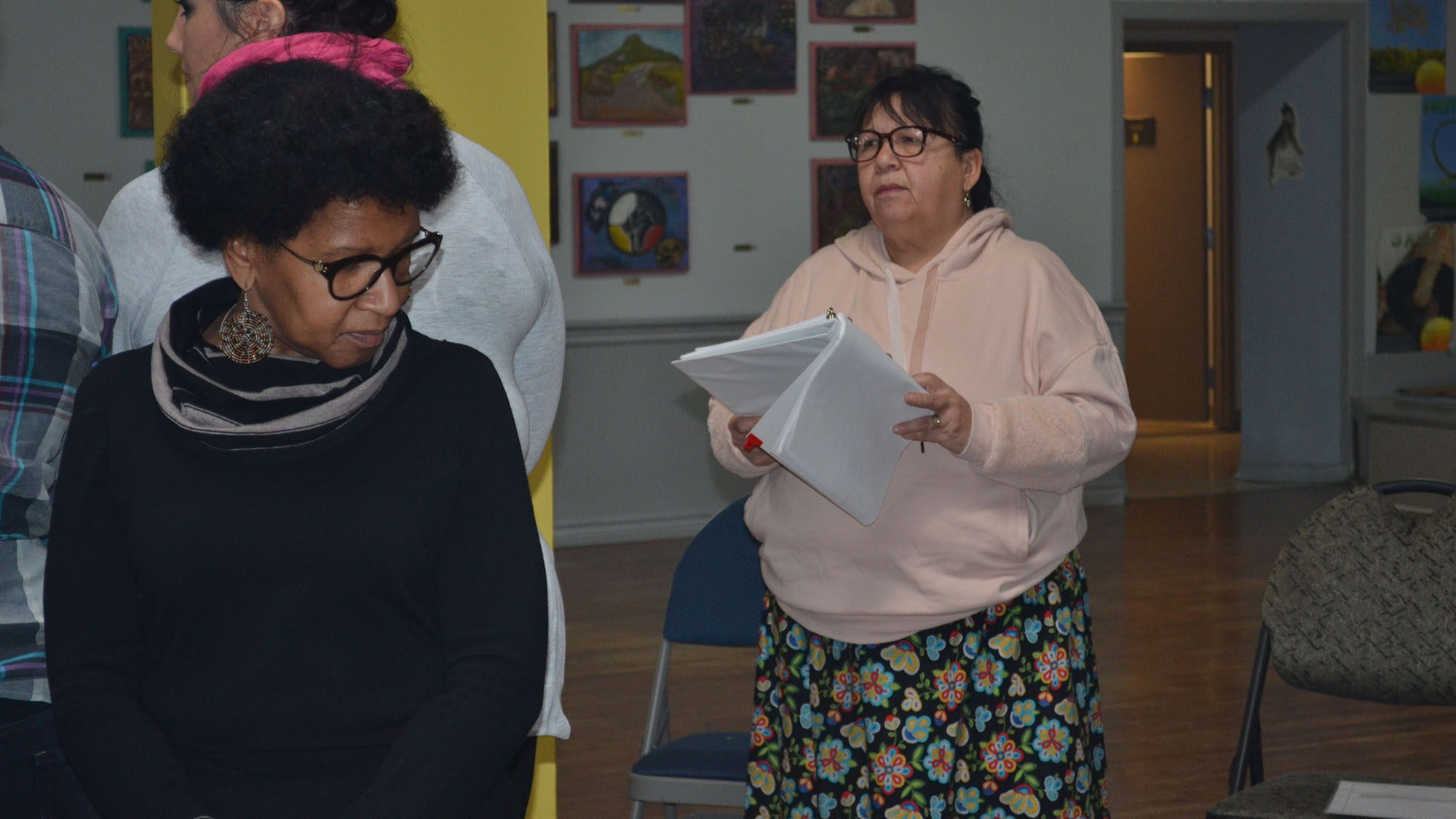
caption
Debbie Eisan (right) leads a blanket exercise at the Mi’kmaw Native Friendship Centre.Social workers, activists and youth program directors learned about colonialism during a blanket exercise hosted by the Mi’kmaw Native Friendship Centre on Tuesday.
The exercise was sponsored by the Community Sector Council of Nova Scotia, which works with more than 2,000 non-profit organizations across the province to find solutions to collective issues. Dana Perry, convener for the council’s central region, said the event was primarily for those working with non-profit organizations, but was open to the public. Twenty people attended.
Perry participated in a blanket exercise in September that changed the way he thinks of the country’s history.
“It’s not Indigenous history, it’s not white colonial history, it’s not French history,” he said. “It’s Canadian history.”
He said blanket exercises could help groups he works with show support and empathy towards people they serve.
Debbie Eisan, Elder of the Mi’kmaw Native Friendship Centre, Dalhousie University and Saint Mary’s University and Denise John, victim support navigator from the centre, were the narrators for Tuesday’s exercise. The narrators guide the participants through the exercise.
Eisan estimated they’ve done over 200 exercises around the Maritimes.
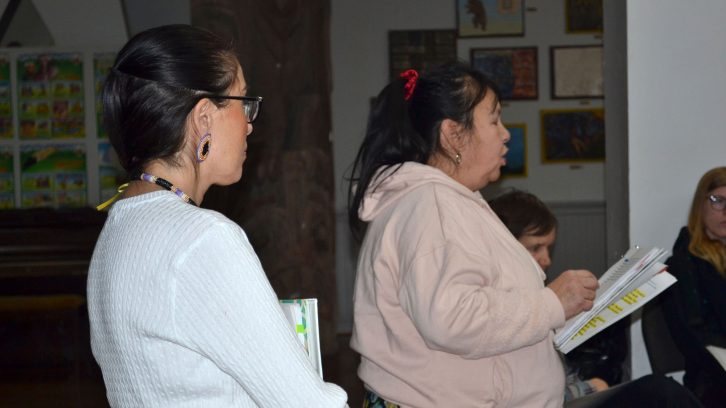
caption
Denise John and Debbie Eisan explain terms that will be used throughout the exercise.The exercise’s goal is to teach the “true history of the Indigenous people of Canada” through an interactive narrative, Eisan said.
At the beginning, participants sat in a circle. Scripts and coloured cards were passed out at random, with Eisan asking participants to put themselves in the “moccasins” of Indigenous people.
Participants removed their shoes and stepped onto white blankets in the middle of the circle.
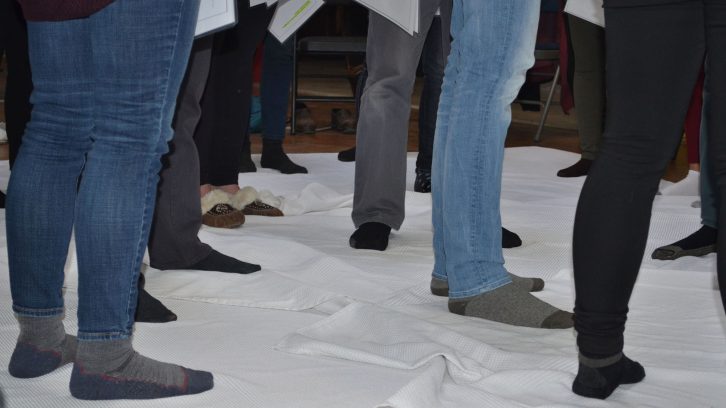
caption
Participants stand on the blankets before the narration begins.The blankets represent Indigenous land. Throughout the narration, Eisan and John folded the blankets inwards to symbolize settlers taking the land.
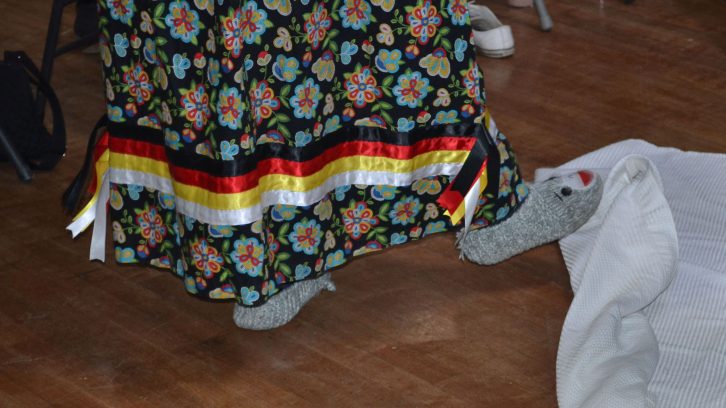
caption
Eisan shrunk the space by kicking the blankets inward.The interactive narrative covers more than 200 years of history. It begins when European settlers first arrived and discusses major events and tragedies. Residential schools, diseases, and the mapping of the Canada/United States border were only a few of the devastations described.
The coloured cards represent the men, women and children who were killed during these events.
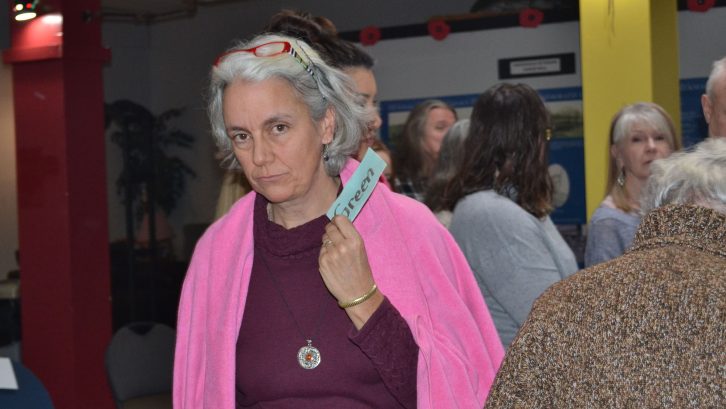
caption
Kirstie Creighton leaves the blanket after her character was killed.Kirstie Creighton, manager of program development for the Alzheimer Society of Nova Scotia, took part for both professional and personal reasons. Her son had done a blanket exercise at school, and told her that every Canadian should do it.
After the exercise was over, Creighton said she was feeling “a million and one emotions.”
Creighton wasn’t alone. Many participants said they felt guilt and sadness during the narration and the talking circle that took place afterwards.
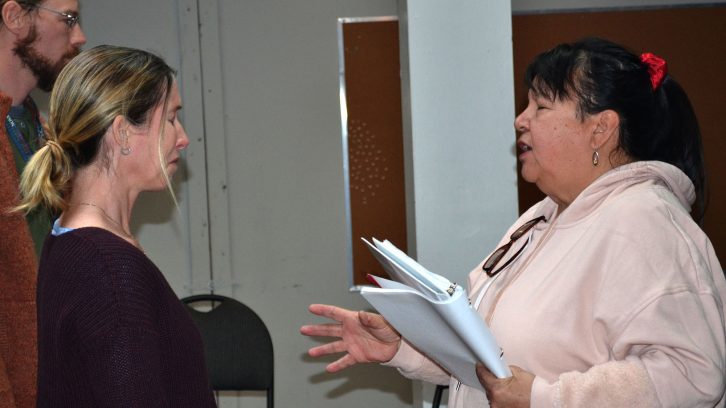
caption
Jan Davison from Laing House became emotional after she was removed from the blanket by Eisan.“I’m in awe of the resilience of Indigenous peoples in Canada and around the world,” Creighton said with tears forming in her eyes.
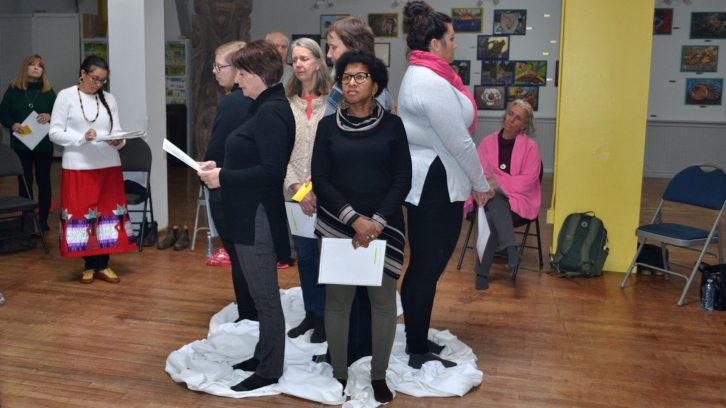
caption
The exercise began with 20 participants and ended with six.Many participants were also overwhelmed by the history they learned. Creighton said it will take her a few days to process everything.
A blanket exercise can be organized in any space. It can be scheduled through Eisan by either contacting the Friendship Centre at 902-420-1576 or emailing Eisan at eisandeb@gmail.com.
